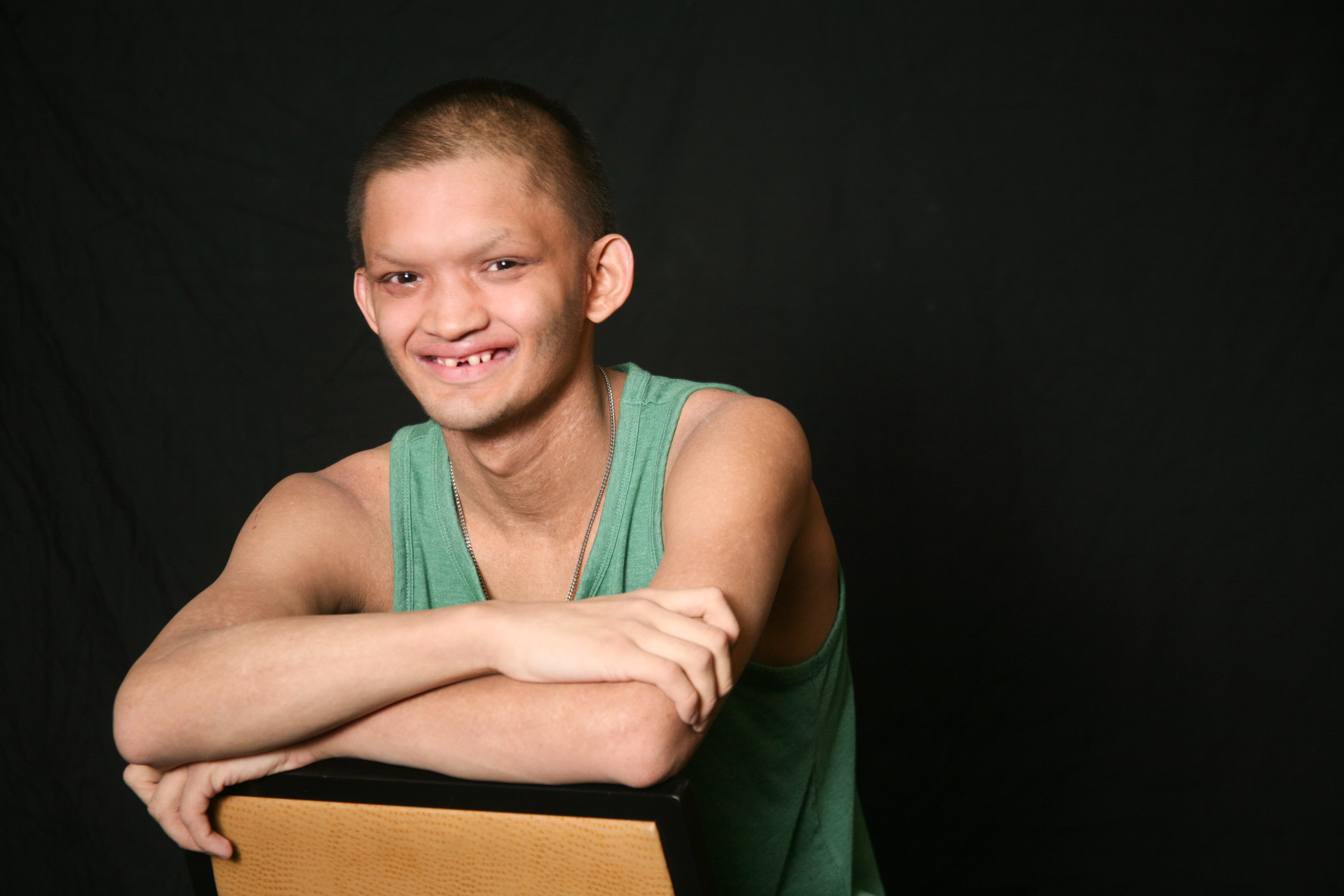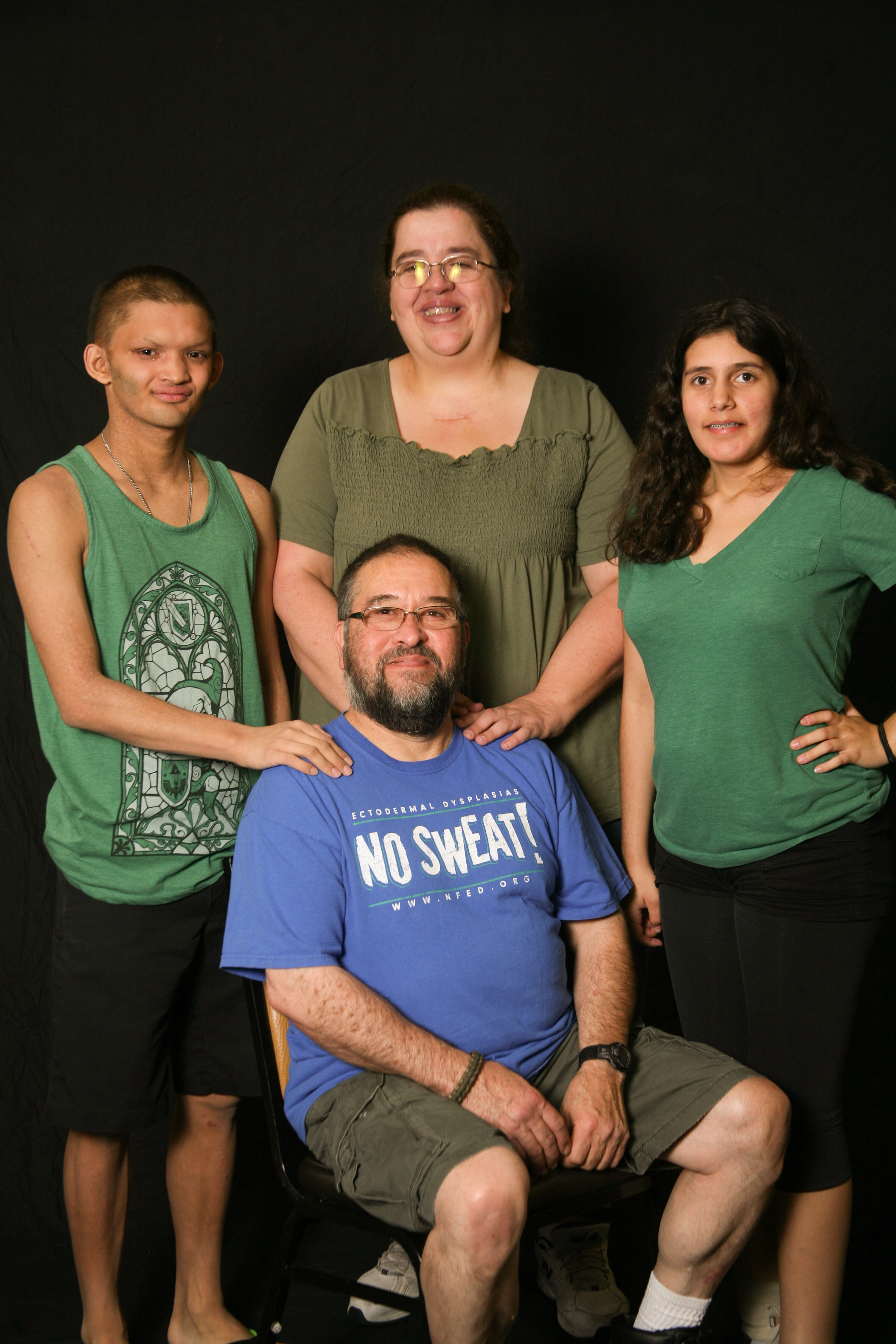By Gina Quintanar
It’s been almost 16 years since my son Alex was diagnosed with ectodermal dysplasia. He was about four months old when I took him with me to a dentist appointment. The dental assistant was playing with him and asked if I had ever noticed that he had no body hair. I said that I had, but I thought some babies were just like that. She told me that Alex could have something called ectodermal dysplasia. Not knowing what that was, I took to the internet for help.
There, I found so many scary things about the ectodermal dysplasias. All he would never be able to do. He would not be able to play outside, or do anything other kids do. The thing that scared me the most is I kept seeing what a “short life span” kids with ectodermal dysplasia had. So I stopped looking.
All the doctors could tell me was how rare the condition was and that this was the first case they had ever seen that was this bad. In addition to his lack of body hair, he also has severe allergies; sparse, brittle hair; severe eczema; only six teeth (four of which are cone-shaped); constant infection on his face; and worst of all: no sweating.

One day, I realized that if I didn’t find out the truth about my son’s condition and how to best help him, no one would. So back to the internet I went. But this time I happened on a group who would change my life forever.
Alex was about six months old at the time. I came across the NFED and the story of a little boy named Charley who could have been my son’s twin. As I clicked through the site, I found so many pictures of kids that looked just like my son.
I requested information and they sent me a book about different types of ectodermal dysplasia. I read it cover to cover and then took it in to the doctor. I turned to the page with the HED (hypohidrotic ectodermal dysplasia) section and said, “I think this is what he has.”
Her response was, “Oh hey, yeah, probably” and I thought, “probably?” I had to ask to be sent to a specialist to be diagnosed.
I spent a few years trying to figure out how the heck my husband and I were going to raise a boy with “special needs” and really trying to understand what that meant. I would periodically go to the NFED page and read all the stories of all the families that were raising kids with HED. We followed the story of Charley and his mother who fought for him and taught him to fight for himself. I knew that was the kind of mom I had to be.
Mary Kaye Richter showed me that her son had the same type of ectodermal dysplasia as Alex did and he was a full-grown, happy adult, with a good life, who worked outside for a living! I was shocked.
But things would be different now; I was armed with information. I could put Alex in a bubble and tell him all the stuff he couldn’t do, or I could be like Mary Kaye Richter and fight side by side with Alex and show people that Alex was just like other kids. He just can’t sweat.
The NFED showed me that my son could live a happy life. He went from a boy I kept inside all the time because I was afraid something would happen to him to a boy who swims, rides his bike all over town, and so much more.
My son is amazing. He is a good person who helps other people because the NFED gave me the confidence to not be afraid of his diagnosis, but to be armed with information to make a difference.
When you are a mom on a mission anything is possible. You just have to make the conscious choice to stand up and fight for your son every day, in every way. Now I know he will be the best person he can be.

In 2010, we attended our first Family Conference in Colorado and haven’t missed a conference since. I will always remember that first conference.
Alex, who was 10 at the time, said in amazement, “Hey Mom, all these kids look just like me!” He had ever met anyone with ectodermal dysplasia before.
Every year he goes to conference, it’s like coming home again and not only for him but for our whole family.
Other Stories You may be interested in:
Share Your Story
[…] The Best He Can Be […]
[…] The Best He Can Be […]
This story got my husband and I talking about our own ED story/memories! It’s oddly comforting to look back at the first reaction of paranoia and confusion – and see that, with help from the NFED and other affected families, we were not alone, and being strong was easier that we thought it would be.
It’s been too long since we’ve been to a conference, but we are forever grateful for the NFED!